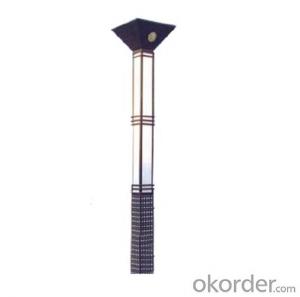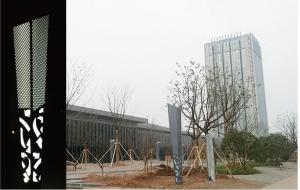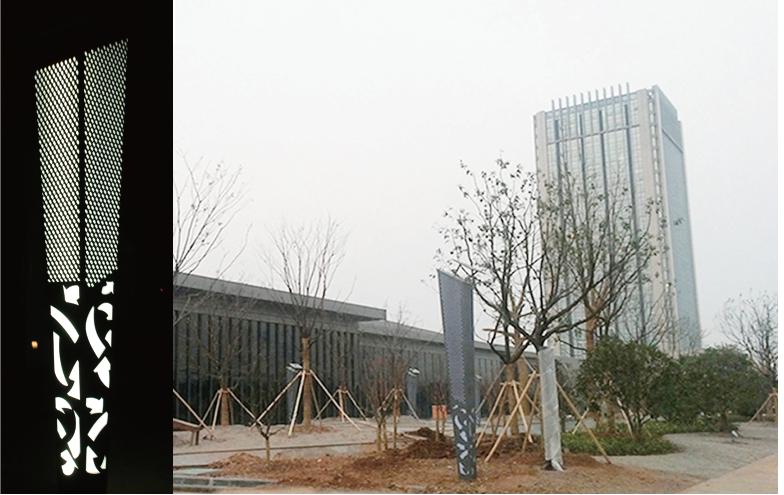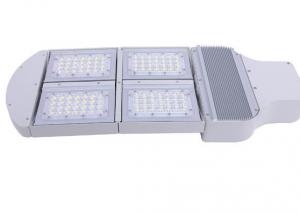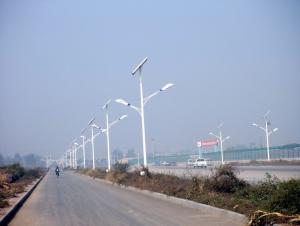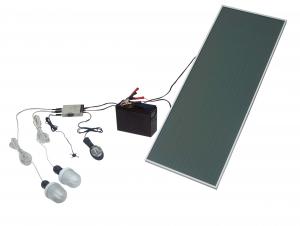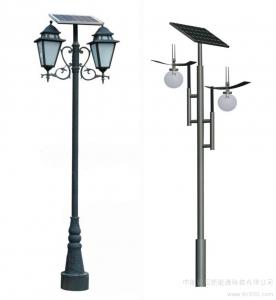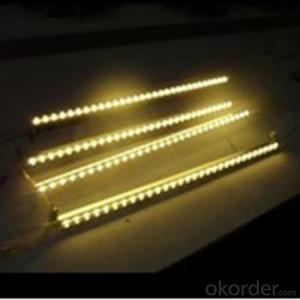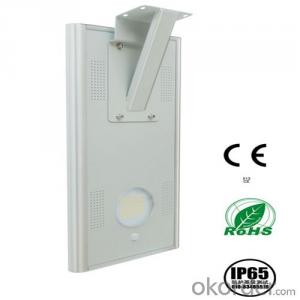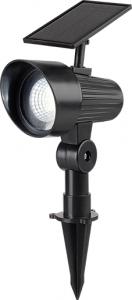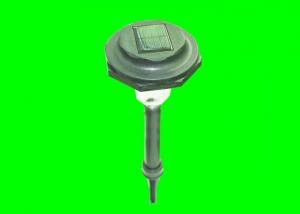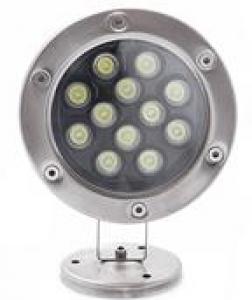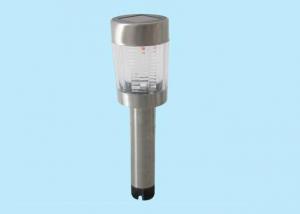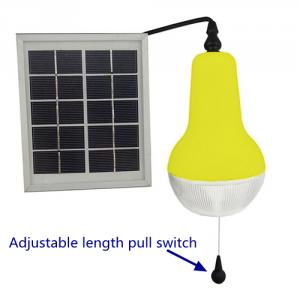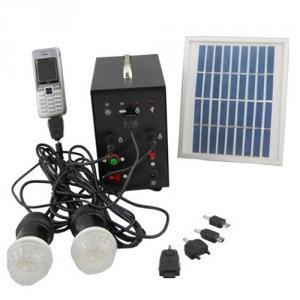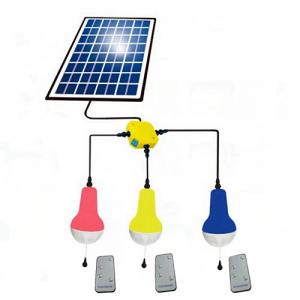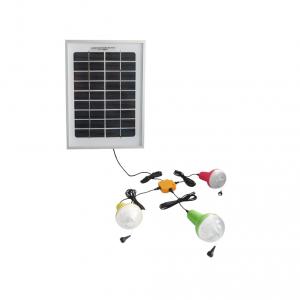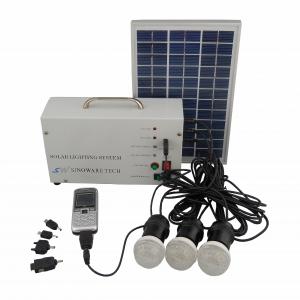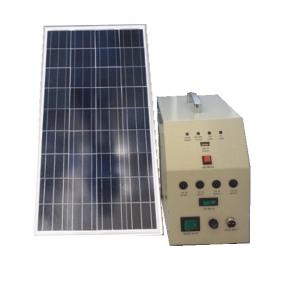Best Outdoor Solar LED Garden Light 18W
OKorder Service Pledge
OKorder Financial Service
You Might Also Like
LED garden light
futures:
Over 50,000Hrs mean time between failures(depends on environment).
Superior color rendering index up to 90,near daylight quality.
Lamp Luminous Efficiency up to 100lm/w.
what we can offer:
1.Your inquiry related to our products or prices will be replied immediately.
2. Professional service from well-trained and experienced staffs is customers’ best choice to secure good
communication, on time delivery, reliable warranty etc.
3. OEM is available for Anern Products.
FAQ
Q:Are you manufacture or trading company
A:we are group company with facotries.
Q:Required mainly certificated?
A:Our product are certified by CE RoHS,IEC,C-tick etc.
Q:Your mainly export market?
A:The main market of our product is South-east Asia,Mid east,Africa, east Europe and latin America
Q:your main product produced?
A:solar section:solar street light, LED section:LED street light
| LED Power | 18W | LED model | DZ-TYD-15 |
| solar module | 18v 55wp | battery | 12V60AH |
| Lifespan | 3,000~,000hrs | Warranty | 3 years |
| controller | 12V5A | reliability | 100% light over year |
- Q: Can solar lights be dimmed?
- Yes, solar lights can be dimmed. Many solar lights have adjustable settings or come with built-in dimming capabilities, allowing users to control the brightness level according to their preference or specific lighting needs.
- Q: How do solar lights handle hailstorms?
- Solar lights are designed to be durable and withstand various weather conditions, including hailstorms. The majority of solar lights are made with high-quality materials that can endure impact from hailstones without significant damage. The outer casing of solar lights is typically constructed using durable materials such as stainless steel, aluminum, or heavy-duty plastic. These materials are chosen for their ability to withstand external forces, including hailstorms. They are usually resistant to cracking, denting, or shattering, ensuring the longevity of the solar light. Additionally, the solar panels on these lights are made with tempered glass or polycrystalline materials that are designed to be impact-resistant. These materials are strong enough to withstand hailstones without breaking or cracking. The solar panel is usually mounted at an angle on the light, which helps reduce the direct impact of hailstones, providing an additional layer of protection. Moreover, most solar lights have a built-in protective shield or cover over the solar panel. This shield helps prevent any damage from hailstones hitting the solar panel directly. It acts as a barrier, absorbing the impact and distributing it evenly across the surface, reducing the risk of damage. However, it is important to note that extreme weather conditions, such as severe hailstorms with large hailstones or high wind speeds, can potentially cause damage to solar lights. In such cases, it is recommended to temporarily remove or cover the lights to ensure their safety. Overall, solar lights are designed to handle hailstorms and are built with durable materials that offer protection against hailstone impact. With their resilient construction, solar lights can continue to function effectively even after being exposed to hailstorms.
- Q: Can solar lights be used to light up remote walkways or trails?
- Indeed, remote walkways or trails can be illuminated using solar lights. The utilization of solar lights in remote areas is highly advantageous due to their capability to function autonomously without relying on a power grid. These lights operate by converting sunlight into electricity through solar panels, which is then stored in rechargeable batteries. This stored energy is subsequently utilized to power the lights during the nighttime, offering a reliable and sustainable lighting solution for remote walkways or trails. One of the primary benefits of solar lights is their simplicity of installation. Since they do not necessitate any wiring or connection to an electrical source, they can be effortlessly positioned along walkways or trails without the requirement of extensive infrastructure. This feature makes them especially suitable for remote areas where conventional lighting options may not be viable. Solar lights are also energy-efficient as they depend on renewable solar energy. This not only diminishes dependence on non-renewable energy sources but also aids in reducing carbon emissions. Additionally, solar lights often incorporate built-in sensors that automatically switch on the lights at dusk and off at dawn, optimizing energy usage even further. Moreover, solar lights are typically constructed to withstand outdoor conditions, including exposure to rain, snow, and extreme temperatures. This durability renders them appropriate for use in remote areas where maintenance and accessibility may present challenges. In summary, solar lights can effectively illuminate remote walkways or trails. Their independence from the power grid, ease of installation, energy efficiency, and durability make them an ideal lighting solution for remote areas, enhancing pedestrian safety and visibility while enriching the overall experience of traversing these paths.
- Q: How do solar lights handle voltage spikes or overcharging?
- Solar lights incorporate built-in mechanisms to effectively manage voltage spikes and avoid overcharging. These mechanisms encompass a range of components, including charge controllers and voltage regulators. The primary role of charge controllers is to regulate the electricity flow between the solar panel and the battery. They diligently monitor voltage and current levels, disconnecting the solar panel from the battery once it reaches full charge to prevent overcharging. By doing so, charge controllers shield the battery from potential damage caused by excessive voltage. Voltage regulators also play a vital role in solar lights, stabilizing the voltage output. They maintain a constant and safe voltage level, effectively preventing voltage spikes. Acting as a protective buffer, these regulators absorb any surplus voltage, ensuring the battery and other components aren't exposed to sudden surges. Furthermore, solar lights often include protective circuits that offer additional safeguards against voltage spikes and overcharging. These circuits promptly detect any abnormal voltage levels, promptly shutting down the system to prevent harm. Additionally, they possess the capability to automatically restart the system once the voltage returns to normal. To summarize, solar lights employ an array of mechanisms, including charge controllers, voltage regulators, and protective circuits, to effectively handle voltage spikes and prevent overcharging. These mechanisms are crucial in ensuring the long-lasting and secure operation of solar lights.
- Q: Can solar lights be used for outdoor wedding venues or ceremonies?
- Yes, solar lights can certainly be used for outdoor wedding venues or ceremonies. They are a great eco-friendly option that can provide a charming and romantic atmosphere. Solar lights can be used to illuminate pathways, decorate trees or shrubs, highlight specific areas, or even create a beautiful backdrop. They are easy to install and operate without the need for electrical wiring, making them a convenient choice for outdoor events.
- Q: Can solar lights be used for road signs?
- Solar lights are indeed suitable for road signs. They serve as a budget-friendly and eco-friendly substitute for conventional grid-powered lights. By harnessing solar energy, they offer a dependable source of light without the need for electricity, thereby reducing carbon emissions. Installing solar lights on road signs is a hassle-free process that guarantees enhanced visibility and safety during dark or low-light periods. Additionally, these lights are built to last and withstand different weather conditions, ensuring their optimal performance in diverse climates. Furthermore, solar lights possess the advantage of being self-contained, eliminating the necessity for complex wiring or infrastructure. This makes them a perfect choice for road signs situated in remote or hard-to-access locations.
- Q: Can solar lights be used for bike lighting?
- Yes, solar lights can be used for bike lighting. They are a sustainable and eco-friendly option that can be easily attached to bikes to provide illumination during night rides.
- Q: Can solar lights be used for bike or pedestrian path lighting?
- Yes, solar lights can be used for bike or pedestrian path lighting. Solar lights are a sustainable and cost-effective option for illuminating paths as they harness solar energy during the day to power the lights at night. They are easy to install, require minimal maintenance, and can enhance safety for cyclists and pedestrians by providing adequate lighting along the paths.
- Q: What is good for solar lights?
- Look at the installation height, 6 meters can be the use of human resources, generally 3-4 adults can stand up. Solar street lamps are generally installed in rural areas, large span, not suitable for crane installation. We usually install about 25 sets a day.
- Q: Are solar lights suitable for pathways in parks?
- Yes, solar lights are suitable for pathways in parks. They are a cost-effective and sustainable lighting solution that can provide adequate illumination for pathways, enhancing safety and visibility for park visitors. Additionally, solar lights require minimal maintenance and do not rely on electricity, making them a viable option for outdoor spaces like parks.
Send your message to us
Best Outdoor Solar LED Garden Light 18W
OKorder Service Pledge
OKorder Financial Service
Similar products
Hot products
Hot Searches
Related keywords
